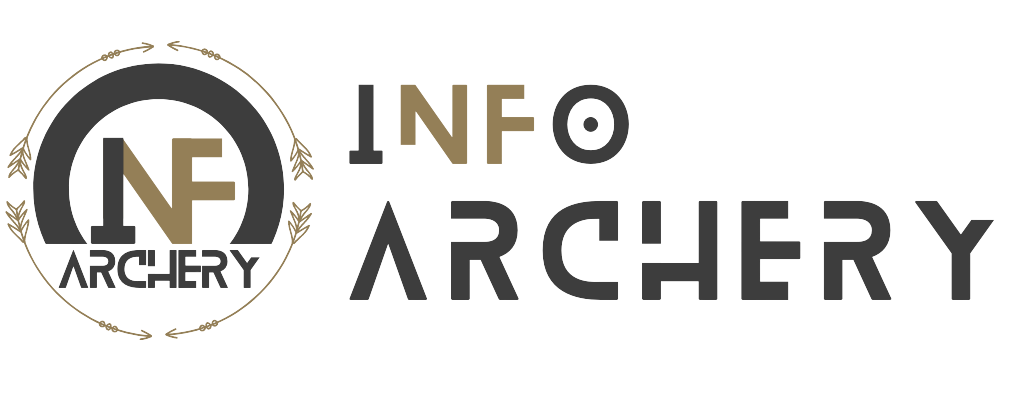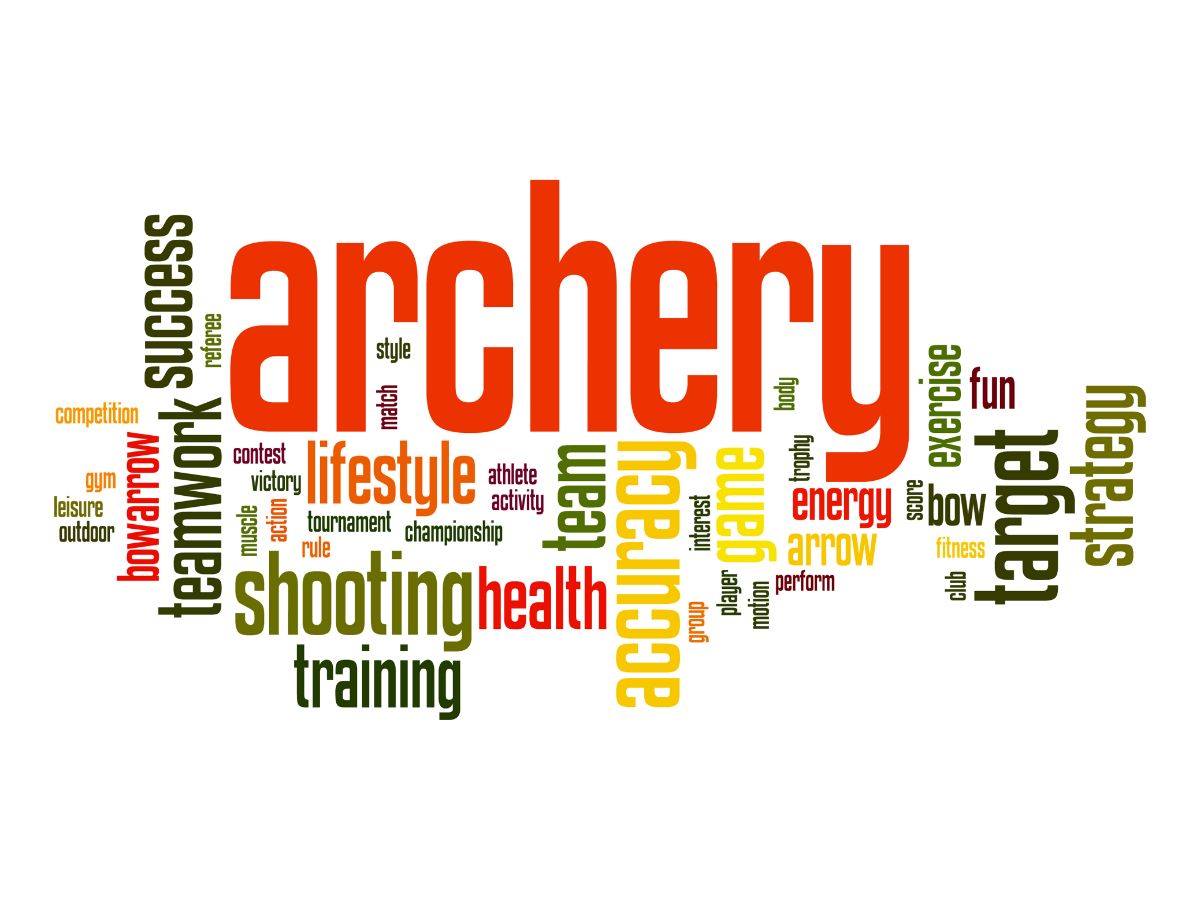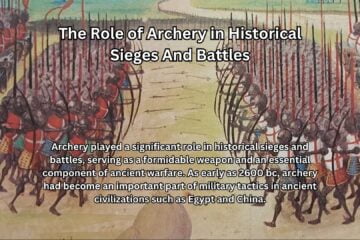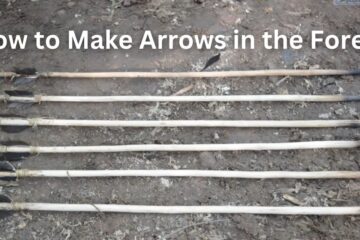Archery terms refer to the specific jargon used to describe different techniques, equipment, and scoring methods in the sport of archery. In this article, we will explore the most common archery terms used by professionals and enthusiasts alike to help you better understand the world of archery.
Archery is a centuries-old sport that has gained tremendous popularity in recent years. It involves shooting arrows at a target with a bow and arrow, aiming to hit the center of the target to score points. The sport requires a unique set of skills and techniques, which are described using specific archery terms that may be unfamiliar to those new to the sport.
Understanding these terms is vital to communicate effectively with fellow archers, coaches, and others in the archery community. In this article, we will explore some of the most common archery terms used in the sport, helping you to develop a comprehensive understanding of the language of archery.
Understanding The Basics Of Archery Terms
Archery is an exciting and ancient sport. Understanding the basics of archery terms is essential if you want to improve your archery skills. Whether you’re a beginner or an experienced archer, this post will help you learn about the different terminologies used in archery.
Definition Of Archery
Archery is the art of shooting arrows using a bow. It has been a popular sport and a means of hunting for centuries. Today, archery has evolved into a recreational and competitive activity.
Parts Of A Bow And Arrow
The bow and arrow are the most crucial components in archery. Understanding the different parts of a bow and arrow can help improve your archery performance. Here are the essential parts of a bow and arrow:
Bow Parts
- Grip: The handle of the bow where the archer holds the bow.
- Riser: The central part of the bow that connects the limbs.
- Limbs: The upper and lower parts of the bow that store the energy when pulling the string.
- String: The cord that connects the limbs and propels the arrow.
Arrow Parts
- Nock: The carved groove at the back of the arrow that attaches to the bowstring.
- Fletchings: The feathers or vanes at the back of the arrow that maintains its flight and stability.
- Shaft: The body of the arrow.
- Point: The tip of the arrow used for penetration.
Types Of Bows
Several types of bows are used in archery, each with distinct advantages. Knowing the types of bows can help you determine the right one for you. Here are the most common types of bows:
Recurve Bow
- A popular type of bow in archery that features a curve at the end of the limbs.
- Offers better accuracy and distance compared to other bow types.
- Used in olympic archery competitions.
Compound Bow
- A modern bow that uses a complex system of pulleys and cables to bend the limbs.
- Easier for beginners to use and offers better precision.
Longbow
- A traditional bow made of a single piece of wood.
- Offers less accuracy and distance than other bows.
- Preferred by traditional archers and hunters.
Types Of Arrows
The type of arrow you use affects your overall archery performance. Different arrows are suitable for various types of bows and archery practices. Here are the different types of arrows:
Wooden Arrows
- Traditional arrows made of wood.
- Suitable for longbows and traditional archery practices.
Aluminum Arrows
- Lightweight arrows that provide better accuracy and speed.
- Suitable for hunting and target shooting.
Carbon Arrows
- Durable and lightweight arrows that offer better accuracy.
- Preferred by competitive archers and hunters.
Types Of Nocks And Fletchings
Nocks and fletchings play a significant role in arrow flight and accuracy. Choosing the right type of nocks and fletchings can help improve your archery performance. Here are the different types of nocks and fletchings:
Nocks
- Index nocks: A type of nock that features an index notch to ensure consistent arrow placement.
- Push-in nocks: A type of nock that requires pressure to attach the arrow to the bowstring.
- Pin nocks: A type of nock that features a pin to keep the arrow in place.
Fletchings
- Feathers: Traditional fletchings that provide better stability and accuracy.
- Vanes: Modern fletchings made of plastic or rubber that offer better consistency and speed.
Understanding the basics of archery terms is crucial if you want to improve your archery skills. By familiarizing yourself with the different terminologies used in archery, you can select the right equipment and practice the correct techniques to enhance your performance.
Breaking Down Advanced Archery Terms
Archery is a sport that requires precision, skill, and knowledge. While it may look simple on the surface, there are many advanced archery terms that can take years to master. We will break down some of the most important advanced archery terms to help you better understand the sport.
Archer’s Paradox
Archer’s paradox is a phenomenon that occurs when an arrow is released from the bow and flexes as it travels through the air. The flexing causes the arrow to bend around the bow and then straighten out as it continues on its path.
This is an important concept for archers to understand because it affects the way they aim and shoot. Here are some key points to keep in mind about archer’s paradox:
- Archer’s paradox is caused by the flexing of the arrow as it is released from the bow.
- This phenomenon affects the trajectory of the arrow and how it travels through the air.
- Archers must take into account the archer’s paradox when aiming and shooting to hit their target accurately.
Arrow Spine
Arrow spine refers to the stiffness of an arrow. The stiffness of an arrow affects how it reacts when it is released from the bow and impacts the target. Archers must choose arrows with a spine that matches their bow’s draw weight and their own shooting style.
Here are some key points to keep in mind about arrow spine:
- Arrow spine refers to the stiffness of an arrow.
- The stiffness of an arrow affects how it reacts when it is released from the bow and impacts the target.
- Archers must choose arrows with a spine that matches their bow’s draw weight and their own shooting style.
Brace Height
Brace height refers to the distance between the bowstring and the grip of the bow. The brace height affects the way the arrow is released and how it travels through the air. Archers must adjust their brace height according to their bow’s specifications and their own shooting style.
Here are some key points to keep in mind about brace height:
- Brace height refers to the distance between the bowstring and the grip of the bow.
- The brace height affects the way the arrow is released and how it travels through the air.
- Archers must adjust their brace height according to their bow’s specifications and their own shooting style.
Canting
Canting refers to the angle at which the bow is held. It can affect the way the arrow is released and how it travels through the air. Archers must be aware of their canting and adjust it if necessary to improve their accuracy.
Here are some key points to keep in mind about canting:
- Canting refers to the angle at which the bow is held.
- Canting can affect the way the arrow is released and how it travels through the air.
- Archers must be aware of their canting and adjust it if necessary to improve their accuracy.
Draw Length And Weight
Draw length and weight refers to the distance an archer pulls the bowstring back and the amount of force required to do so. These factors affect the speed and accuracy of the arrow. Archers must choose a draw length and weight that matches their physical build and shooting style.
Here are some key points to keep in mind about draw length and weight:
- Draw length and weight refer to the distance an archer pulls the bowstring back and the amount of force required to do so.
- These factors affect the speed and accuracy of the arrow.
- Archers must choose a draw length and weight that matches their physical build and shooting style.
Archery has a language of its own, with many advanced archery terms that can take years to master. By breaking down some of the most important advanced archery terms such as archer’s paradox, arrow spine, brace height, canting, draw length, and weight, we hope to help you better understand the sport and improve your accuracy.
Remember to keep these key points in mind when practicing your archery skills to become a better archer.
Mastering Target Archery Vocabulary
Whether you are an enthusiastic beginner or an experienced archer, learning the right vocabulary can make a significant difference in mastering target archery. Here are some essential indoor vs. Outdoor archery terms, distance measurement terms, scoring techniques, and terms, sight and peep sight terms that you should know to become an accomplished archer.
Indoor Vs. Outdoor Archery Terms
Indoor and outdoor archery differ based on the type of equipment used, the archery range, and the type of competition. Here are some basic terms to distinguish between indoor and outdoor archery.
- Indoor archery: Archery practice or competition that happens inside a building.
- Target face: A round multi-colored target with rings that help to score points.
- Fingers tab: A glove-like accessory that protects the fingers from injury due to the bowstring.
- Bowstand: A stand to hold the bow while not in use.
- String nock: The groove at the end of an arrow that snaps onto the bowstring.
- Outdoor archery: Archery practice or competition that happens outside in the open air.
- Arrow rest: A device that holds the arrow and helps to guide it.
- Quiver: A container to hold arrows while shooting.
- Stabilizer: A bar attached to the bow to help balance the bow and reduce vibration.
- Arm guard: A protective gear, usually made of leather, that shields the forearm from the bowstring.
Distance Measurement Terms
Knowing how to measure the various distances involved in archery is fundamental to achieve accuracy. Here are some essential distance measurement terms to keep in mind.
- Yardage: The distance from the archer to the target measured in yards.
- Range finder: A device used to calculate the distance to the target.
- Footing: A platform or area where archers stand to take their shots.
- Marks: Various reference points on the shooting range used to help archers estimate the distance to the target.
Scoring Techniques And Terms
Scoring is an integral part of archery, and understanding the scoring system can help an archer to improve their skills. Here are some common scoring techniques and terms that you need to know.
- Bull’s eye: The center of the target, which is worth the most points.
- End: A set of arrows shot at the target, usually consisting of four or six arrows.
- Perfect score: A perfect score is achieved when all arrows hit the bullseye, resulting in a score of 300 points.
- X-ring: A smaller circle within the bullseye, which scores higher points and indicates more precise shooting.
Sight And Peep Sight Terms
Sight alignment and aiming are critical components of archery success. Here are some common sight and peep sight terms that you should become familiar with.
- Sight pin: A metallic or plastic attachment on the bow to aim at the target.
- Sight picture: A mental image an archer has while aiming the bow to aim accurately.
- Peep sight: A small plastic ring in the bowstring that helps to aim at the target.
- Anchor point: The spot on the archer’s face where the drawing hand comes to rest while aiming.
Building your archery vocabulary is crucial to mastering the sport. By knowing the essential indoor vs. Outdoor archery terms, distance measurement terms, scoring techniques and terms, and sight and peep sight terms, you can become a better archer and enjoy the sport even more.
Understanding Hunting Archery Terminology
Hunting Bow And Arrow Terms
Hunting with a bow and arrow is an exciting and challenging sport that requires skill and precision. If you’re new to archery, it can be challenging to understand the different terms used to describe hunting bow and arrow. Here are some key points to help you understand the terminology.
- Draw weight: The amount of force required to pull the bowstring to the full draw length.
- Draw length: The distance between the bow grip and the bowstring when the bow is drawn to the shooter’s anchor point.
- Bow length: The distance between the bowstring’s groove and the bow’s grip.
- Arrow spine: The stiffness of the arrow, which affects the arrow’s reaction to the bow’s energy during release.
- Arrow weight: The total weight of the arrow, including the shaft, nock, fletching, and arrowhead.
- Arrow speed: The measurement of the arrow’s velocity, usually measured in feet per second (fps).
- Let-off: The amount of reduction in draw weight that occurs when the bowstring is released.
Tree Stand And Ground Blind Terminology
Whether you’re using a tree stand or a ground blind, understanding the terminology associated with these hunting tools is crucial for your success.
- Tree stand: A platform used by hunters to elevate themselves above the ground to gain a better viewpoint of their surroundings.
- Climbing stand: A tree stand designed to be attached to the tree trunk using a climbing mechanism.
- Fixed stand: A permanent tree stand that is bolted to the tree.
- Ladder stand: A tree stand that uses a ladder to access the platform.
- Ground blind: A camouflaged shelter used by hunters to conceal themselves while hunting on the ground.
- Pop-up blind: A portable ground blind that can be set up and taken down quickly.
- Brush blind: An improvised ground blind made of natural materials to blend in with the surrounding environment.
Scent Control Terms
To increase your chances of a successful hunt, controlling your scent is crucial. Here are some essential scent control terms to help you understand the practice.
- Wind direction: The direction in which the wind is blowing.
- Thermals: The way wind currents move vertically during the day and night.
- Scent elimination: The process of removing or covering human scent.
- Scent-free: Products designed to mask human scent, such as shampoo, soap, and laundry detergent.
- Scent control clothing: Clothing designed with an outer layer that helps prevent human scent from escaping.
Types Of Broadheads
Broadheads are an essential component of any hunter’s bow setup. Different types of broadheads serve different purposes, and understanding their characteristics can make a significant difference in your hunting success.
- Fixed blade broadheads: Broadheads with non-moving blades, engineered for maximum penetration.
- Mechanical broadheads: Broadheads with retractable blades designed for increased accuracy and wider wound channels.
- Hybrid broadheads: A combination of fixed and mechanical broadhead, offering features from both types.
By understanding these terms, you’ll be well on your way to becoming an accomplished archery hunter. Happy hunting!
Learning About Archery Accessories
Archery is a sport that has been enjoyed by people for centuries. To learn about archery, you must also get familiar with the archery accessories that are often used. In this section, we will delve into the different types of releases, bow stabilizer terms, arrow rest terms, string silencer terms, and quiver terminology.
Types Of Releases
A release is a device that aids a shooter in pulling the bowstring, helping to decrease the amount of movement and torque that may be experienced during a shot. There are different types of releases available in the market, including:
- Thumb trigger release: A release that utilizes thumb pressure to release the bowstring.
- Back tension release: A release that employs pulling the bowstring using back muscles.
- Index finger release: A release that uses a trigger and a finger to release the bowstring.
- Resistance activated release: A release that utilizes increasing pressure to activate the release.
Bow Stabilizer Terms
A stabilizer is an accessory that can be attached to a bow to help improve accuracy and balance. Here are some crucial terms to know when it comes to bow stabilizers:
- Vibration dampener: An accessory that is attached to the end of the stabilizer that helps reduce vibrations caused during shooting.
- Carbon stabilizer: A type of stabilizer made of lightweight carbon materials.
- Weight system: A system that permits the user to add or remove weight to the end of the stabilizer, adjusting balance according to needs.
- Length: The measurement of the stabilizer from end to end, ranging from 9 to 36 inches.
Arrow Rest Terms
An arrow rest is an archery accessory that supports and holds an arrow in place before and after a shot. Let’s take a look at some common arrow rest terms below:
- Whisker biscuit: A type of arrow rest that uses bristles to hold the arrow, offering stability and support.
- Drop away rest: An arrow rest that drops away when an arrow is shot, allowing the arrow to have better clearance.
- Launcher: The part of an arrow rest that supports the arrow.
- Capture rest: An arrow rest that holds the arrow and prevents it from falling off.
String Silencer Terms
String silencers are accessories that help reduce the noise and vibrations of a bowstring after it’s released. Here are some common terms to keep in mind:
- Whiskers: A type of string silencer made from synthetic materials and fibers.
- Dampeners: String accessories made of rubber, foam, or other materials that reduce string vibrations and noise.
- String stop: An accessory that stops the bowstring after a shot, reducing vibration and noise.
- Weight: Some string silencers contain weights and can be customizable according to the user’s needs.
Quiver Terminology
A quiver is an accessory used to hold arrows, keeping them within easy reach while hunting or shooting. There are different types of quivers, and here are some essential terms related to them:
- Hip quiver: A type of quiver that is attached to the hip or waist of a shooter, allowing them to reach arrows quickly.
- Back quiver: A type of quiver meant to be worn on the shooter’s back, keeping arrows out of the way while shooting or moving about.
- Crossbow quiver: A type of quiver specially designed to hold bolts or crossbow arrows.
- Arrow gripper: A part of the quiver that holds the arrows in place, preventing them from falling out.
Knowing the different archery accessories is essential in mastering the sport. With this knowledge of types of releases, bow stabilizer terms, arrow rest terms, string silencer terms, and quiver terminology, beginners and experienced archers can gear up with the right tools to improve their accuracy and performance.
Frequently Asked Questions On Archery Terms
What Is A Nocking Point In Archery?
A nocking point is a small brass or plastic ring placed on the bowstring to hold an arrow in place.
How Long Should My Arrow Be For My Bow?
The correct arrow length for your bow depends on several factors, such as your draw length, bow type, and arrow material. Consult a professional or use an online arrow chart to determine the appropriate arrow length.
What Is The Purpose Of A Bow Stabilizer?
A bow stabilizer reduces vibrations and helps balance the bow during shooting, resulting in a more accurate shot. It also helps to reduce bow noise and hand shock.
What Are The Different Arrow Materials Used In Archery?
Arrow materials commonly used in archery include wood, aluminum, carbon, and a combination of carbon and aluminum. The type of material used affects the arrow’s weight, strength, and stiffness.
What Is The Difference Between A Recurve And A Compound Bow?
Recurve bows have a traditional design and use a single string to launch arrows, while compound bows use a system of pulleys and cables to generate more power and a faster, smoother shot. Compound bows are also generally more compact and easier to maintain.
Conclusion
As you can see, there are many archery terms that are essential to understanding this fascinating sport. Whether you are just learning about archery or you have been practicing for years, being familiar with these terms can greatly improve your knowledge and skills.
From the basics such as draw weight and release aid to the more complex terms such as fletching and nocking point, each term has its own significance in the world of archery. By understanding these terms, you can not only better understand the equipment but also the technique and skill involved in becoming a successful archer.
So, whether you are an archery enthusiast or just curious to learn more, take some time to familiarize yourself with these important archery terms – you may just find yourself hitting the bullseye more often!







